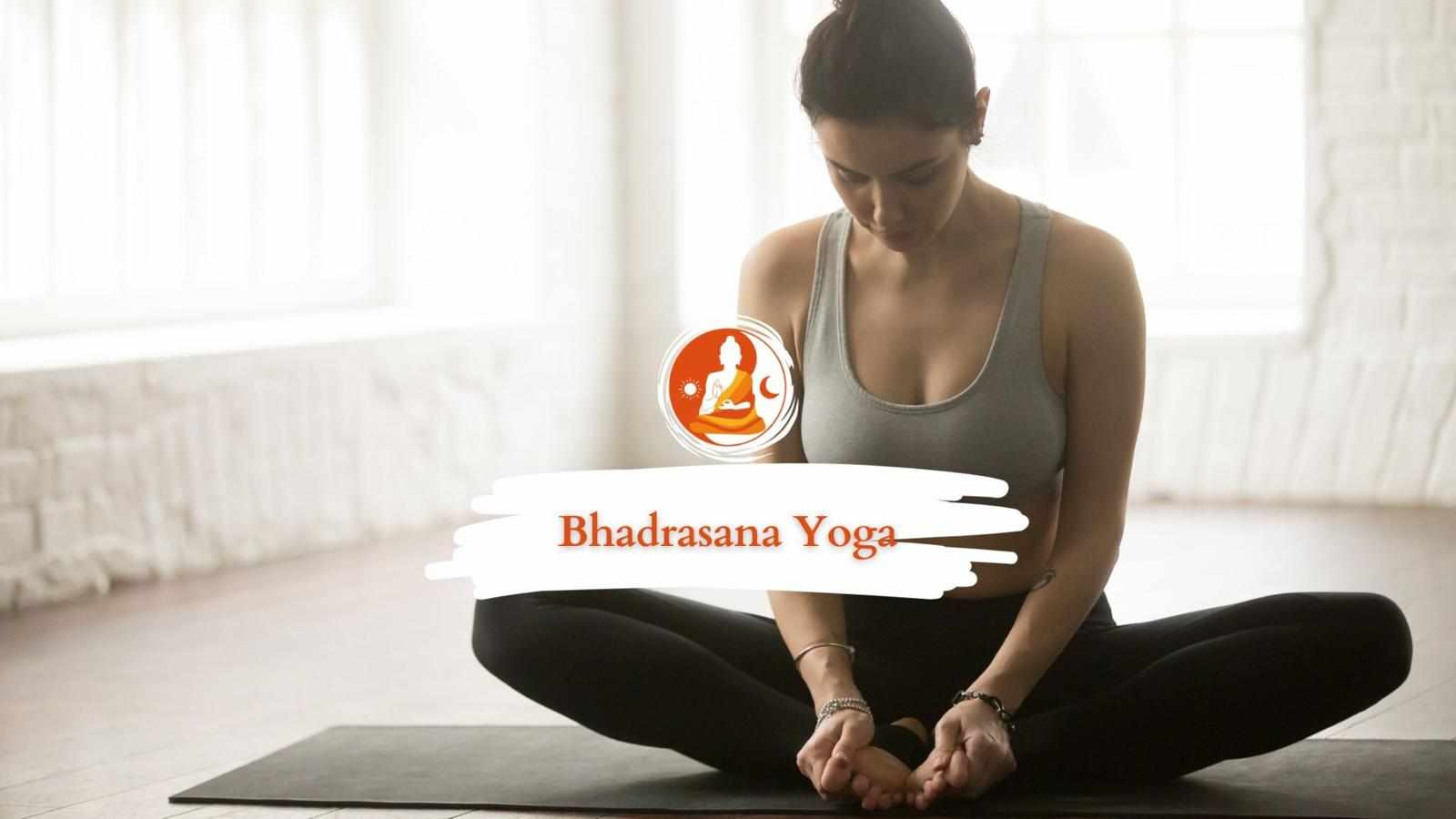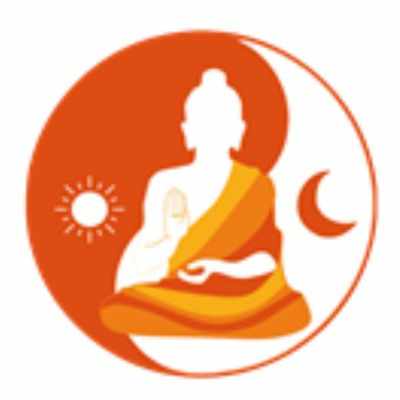
Yoga, an ancient practice that harmonizes the mind, body, and spirit, offers numerous asanas (poses) designed to enhance flexibility, strength, and mental clarity. Among the many yoga postures, Bhadrasana holds a special place, often referred to as the "Gracious Pose" or "Butterfly Pose." This simple yet powerful posture provides a range of physical and mental benefits, making it an essential component of any yoga routine.
What is Bhadrasana?
Bhadrasana, pronounced bhuh-drah-sah-nah, is derived from the Sanskrit words “Bhadra” meaning "gracious" or "auspicious," and “Asana” meaning "pose" or "posture." It is also known as the Butterfly Pose because the posture mimics the open wings of a butterfly. In this seated position, the feet are brought together, and the knees are bent outward, which opens up the hips and groin. Bhadrasana is typically performed while sitting on the floor, offering a calming and centering effect for practitioners.
How to Practice Bhadrasana: Step-by-Step Instructions
To perform Bhadrasana, follow these simple steps:
Start in a Comfortable Seated Position: Begin by sitting on the floor with your legs extended in front of you. Keep your spine straight and your shoulders relaxed. If necessary, sit on a folded blanket or cushion to make your hips more comfortable.
Bend Your Knees: Slowly bend your knees and bring your feet together, so the soles of your feet touch each other. Bring your heels as close to your body as possible.
Open Your Hips: Gently press your knees toward the floor, allowing your hips to open. Ensure that you don’t force your knees down, but let them naturally relax toward the ground.
Hold Your Feet: With your hands, grab hold of your feet or ankles. You can also use your thumbs to gently massage the inner arches of your feet, which can help to stimulate the feet and calm the mind.
Lengthen Your Spine: Inhale deeply and lengthen your spine, ensuring your back is straight. Avoid rounding your shoulders or collapsing your chest. Keep your chest open and your shoulders relaxed.
Relax and Breathe: Once you are in the posture, relax your legs and let your knees fall open comfortably. Focus on your breath, taking slow and deep inhales and exhales. Remain in the position for 5-10 breaths, or as long as comfortable.
Benefits of Bhadrasana
Bhadrasana offers a wide range of benefits for both the body and mind. Some of the key advantages of practicing this pose include:
1. Improved Flexibility in the Hips and Groin
One of the main benefits of Bhadrasana is its ability to increase flexibility in the hips and groin area. The outward rotation of the thighs and the deep stretch of the inner thighs help to open up the hips and relieve tightness. This is especially beneficial for individuals who spend a lot of time sitting or have tight hip flexors.
2. Strengthens the Lower Back
By engaging the core and maintaining a tall spine while practicing Bhadrasana, you help strengthen the muscles of the lower back. This posture encourages proper posture and alignment, which can alleviate back pain and improve spinal health.
3. Stimulates Circulation
The position of the feet and knees in Bhadrasana helps improve circulation, especially to the lower body. By gently pressing the knees toward the floor and keeping the feet together, you stimulate blood flow, which can be helpful for individuals with poor circulation or those experiencing numbness or tingling in their legs.
4. Stretches the Inner Thighs
Bhadrasana is an excellent stretch for the inner thighs (adductors). The opening of the legs in the pose can reduce stiffness and tension in this area, making it a valuable stretch for athletes or anyone experiencing tightness in the inner thighs.
5. Calms the Mind
As with many seated yoga poses, Bhadrasana encourages relaxation and mindfulness. Sitting in the pose while focusing on your breath can help calm the nervous system, reduce stress, and promote a sense of peace and balance. It’s often used in meditation and pranayama (breathing exercises) practices for grounding.
6. Boosts Reproductive Health
The opening of the hips and the gentle stretch of the pelvis area can be beneficial for reproductive health. Bhadrasana can improve blood flow to the reproductive organs, which may help with menstrual discomfort, improve fertility, and support overall reproductive wellness.
Common Mistakes to Avoid in Bhadrasana
While Bhadrasana is a relatively simple pose, it is important to avoid a few common mistakes to ensure you get the most out of the posture:
Forcing the Knees Down: While it’s tempting to press the knees toward the ground, don’t force them down. Allow the knees to naturally fall as much as your body allows. Forcing the stretch can strain the hips and lower back.
Rounding the Spine: Keep your spine straight throughout the pose. Avoid slumping or arching your back excessively, as this can lead to discomfort and poor posture.
Overstretching: Do not push yourself into an extreme stretch if you feel tightness in the hips or groin. Practice patience and gradually work on your flexibility over time.
Variations of Bhadrasana
There are several variations of Bhadrasana that can be modified to suit your body’s needs. Some options include:
1. Bhadrasana with a Block
If you find it difficult to sit with your feet together on the floor, you can place a yoga block under your sit bones to elevate your hips. This modification can help open up the hips more comfortably.
2. Bhadrasana with Forward Fold
If you want to deepen the stretch in your inner thighs, you can slowly fold forward while keeping your feet together and your knees open. This variation allows for an enhanced stretch in the groin and lower back.
3. Bhadrasana with Bound Hands
For an added challenge, you can interlace your fingers around your toes or the soles of your feet. This variation increases the stretch in the hips and the lower back, and also helps engage the shoulders.
When to Avoid Bhadrasana
While Bhadrasana is generally a safe and gentle pose, there are some situations where you might want to avoid it or consult with a healthcare professional before practicing:
Hip Injuries or Surgery: If you have recent or chronic hip injuries or surgeries, this pose may put strain on your hip joints. It’s best to modify or avoid this pose in such cases.
Knee Issues: If you have knee pain or discomfort, Bhadrasana may not be suitable for you. You can try modifying the posture by supporting your knees with cushions or bolsters.
Pregnancy: Pregnant individuals should consult their healthcare provider before practicing Bhadrasana, especially in later stages, as the position can put pressure on the pelvis and abdomen.
Conclusion
Bhadrasana is a highly beneficial and accessible yoga pose that can be practiced by individuals of all levels. Whether you're looking to enhance your hip flexibility, improve circulation, or reduce stress, this graceful pose offers both physical and mental benefits. By incorporating Bhadrasana into your regular yoga practice, you can deepen your connection to your body, calm your mind, and work towards a more balanced and harmonious lifestyle













Write a comment ...